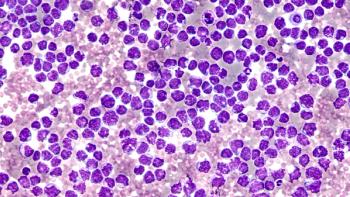
Evaluating Imetelstat's Impact on Health-Related Quality of Life in Lower-Risk MDS: María Díez Campelo, MD, PhD
The phase 3 IMerge trial (NCT02598661) evaluated how treatment with imetelstat impacts health-related quality of life in patients with lower-risk myelodysplastic syndromes (MDS), according to María Díez Campelo, MD, PhD.
In part 1 of an interview with The American Journal of Managed Care®, María Díez Campelo, MD, PhD, a hematologist at the University Hospital of Salamanca, discusses the impact of anemia on patients with lower-risk
Building on this context, Campelo outlines the primary objectives of her
This transcript was lightly edited; captions were auto-generated.
Transcript
For context, can you briefly describe how anemia affects the quality of life of patients with lower-risk MDS? Given this impact, why is it important to evaluate health-related quality of life as a treatment end point?
I think that anemia is a common and very significant complication in this subset of patients because it affects [their] quality of life in different aspects. This anemia induced fatigue [and] physical limitations in the patients, but [it] also induced emotional and social effects that decreased their quality of life.
When we treat these patients with anemia with transfusions, the quality of life is even poorer, and we are also inviting other comorbidities, like cardiac comorbidities or different organ functions. All treatments that we are going to put in the patients to increase hemoglobin levels and decrease transfusions need also to improve [their] quality of life.
In summary, it's very relevant to evaluate health-related quality of life as a treatment end point because we have to be sure that this therapeutic approach is treating the patients to reach, not just to live longer. We need to [ensure] the patients live better. This is the main idea of including [health-related quality of life] as an end point in clinical trials.
Building on that, what were the primary objectives of your analysis? What methods did you use to investigate them?
We performed [the IMerge trial (
We analyze the total QUALMS score and the 2 subscale scores, the physical burden score [QUALMS-P] and the emotional burden score [QUALMS-E]. We analyze and address these scores and scales and this questionnaire at different time points—at baseline, every 4 weeks during the treatment, at the end of treatment, and in the last long-term follow-up—to identify differences between [patients who received] imetelstat and patients [who received the placebo] to identify differences in these 2 arms according to these questionnaires.
Newsletter
Stay ahead of policy, cost, and value—subscribe to AJMC for expert insights at the intersection of clinical care and health economics.













































